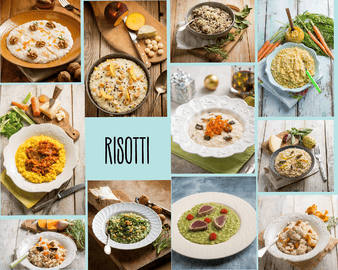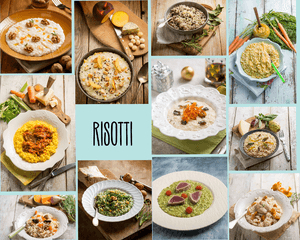Chestnuts

The interesting properties of chestnuts
Chestnuts are the most famous autumn food. They are the fruits of the chestnut tree and are a full part of the Italian (and not only) gastronomic tradition. Chestnuts have great nutritional value; in fact, as dried fruit, they are very rich in omega-3 fatty acids, substances that are good for the heart, eyesight, and cognitive functions.
They are also very calorie-dense and fat as a result of this. To enjoy all of their benefits without taking risks, it is enough to avoid going overboard. Additionally, as evidenced by the high quantities of potassium, phosphate, calcium, and magnesium, chestnuts are a veritable gold mine of mineral salts. When it comes to vitamins, they deliver as well, with reasonable amounts of vitamins B9, B12, C, and D. As the rich history of Italian cooking demonstrates, chestnuts are also incredibly adaptable and can be eaten raw or incorporated into a wide range of recipes.
The main differences between the different varieties:
Generally, we refer to the chestnut as a fruit that doesn’t come in different forms, i.e., is always the same. This belief, however, is just a perception and does not correspond to reality. In fact, there are numerous varieties of chestnuts, which I will briefly explain below.
- Chestnut PGI Cuneo: The fruits are small in size, the pulp is light, and it has a sweet, crunchy, and delicate flavour. This variety is ideal for accompanying second courses or making elaborate fillings.
- From Mount Amiata: The fruits are large, the pulp is medium dark, and the flavour is sweet. The structure is quite leathery; in fact, this type of chestnut is used in making delicious polenta.
- From Suga Valley: The fruits are of considerable size, with a reddish hue and extremely sweet pulp. They are ideal for preparing marron glacé or for making the famous marrons under grappa. Castle
- Rio Castle: The size is medium, and the flavour is fairly sweet; the pulp is halfway between crunchy and floury. Its fruits are very versatile, although they are mainly used for seasoning first courses.
- Monfenera: The fruit is heart-shaped and pale brown, with hints of yellow, making it an extremely unusual variety. The pulp has a simultaneous sweetness and firmness. It can be consumed uncooked or added to first courses that contain protein.
Some recipes with chestnuts
As I specified at the beginning of the article, chestnuts are also, above all, appreciated for their versatility. In this section, you will find some recipes that demonstrate this characteristic. For example, you will find a delicious chestnut and honey cream, a true symphony of “autumn” flavours.
Chestnuts can also, and above all, be used to make confectionery preparations. Some of these are out of the ordinary and do not belong to tradition. The reference is to chestnut ice cream, an ice cream with a decidedly fuller-bodied flavour than average. The vanilla chestnut cream follows a similar narrative, serving as a truly “surprising” treat fit for all palates.
Not to be overlooked is the chestnut rum syrup, which is a fantastic idea for a variation on a traditional preserve. Actually, fresh fruit—mostly peaches—is usually canned in syrup. The idea of applying this process to chestnuts and using a spirit to boot is anything but unhealthy. In fact, you just need to taste them to understand that it’s worth it! Also, in reality, the preparation is long and can even last weeks, but it is not very complex.
What are its benefits?
I have already mentioned the nutritional properties of chestnuts. Having reached this point, however, it is worth delving deeper into their benefits for the body.
In fact, chestnuts, although rich in starch, help digestion. The reason for this lies in the important supply of fibre, which has few equals in the plant world. The abundance of fibre also generates a certain sense of satiety, which is particularly useful for those who want to lose weight and are following low-calorie diets.
Chestnuts are also useful for pregnant women. The reference is to the quantity and variety of B vitamins, which promote the correct development of the foetus.
Chestnuts are also remineralizing, with all that this entails for the health of many internal organs: the brain thanks to phosphorus, bones thanks to calcium, and heart due to the supply of potassium. Finally, chestnuts help prevent cancer as they are rich in antioxidants. Suffice it to say that a pound of chestnuts covers 20% of the daily requirement of folate, which facilitates the synthesis of amino acids and helps the growth of tissues during pregnancy.
What happens if you eat too many chestnuts?
Chestnuts are generally not contraindicated. On the other hand, overeating these fruits can lead to certain issues. The consumption of starch and fibre is specifically mentioned, as these might have conflicting effects when eating an imbalanced diet.
In particular, they could generate a laxative effect as well as some irritation to the intestinal mucosa. A detail to keep in mind if you suffer from irritable bowel syndrome or if you have intestinal problems.
However, these effects concern truly excessive consumption of chestnuts. You may only start to feel some discomfort once you exceed half a kilo of chestnuts a day. In any case, the ideal dose, even considering the caloric intake, is around 50–100 grammes per day.
Can people with high cholesterol eat chestnuts?
People with specific diseases or those who need to watch their diet closely are advised to learn about the connections between various foods and specific values, such as cholesterol.
Let’s talk about chestnuts. Well, people with high cholesterol are not contraindicated. In fact, moderate chestnut consumption helps lower bad cholesterol, which is the primary cause of vascular diseases that are acute and frequently fatal (heart attacks, strokes, aneurysms, etc.).
A similar discussion can be had about the relationship between chestnuts and diabetes. Chestnuts boast a balanced glycemic index, a very rare case among foods rich in carbohydrates. For this reason, diabetics can consume moderate doses of chestnuts without great fear.
Is there an intolerance to chestnuts?
Are there any intolerances or allergies to chestnuts? Yes, although they are very rare. In reality, they can be considered forms of pollinosis. The allergen is characterised by the pollen of the plant, which also remains in the fruit. The symptoms can be gastrointestinal and manifest themselves with diarrhoea, vomiting, nausea, intestinal swelling, and stomach cramps.
But the majority of the symptoms—such as pruritus, asthma, angioedema, and conjunctivitis—are systemic. Anaphylactic shock, a common allergic reaction that needs to be treated right away, happens less frequently.
How may a chestnut allergy be treated? To avoid any allergies or intolerances, simply steer clear of the offending food. In this sense, cutting out chestnuts from your diet does cost you something, but there is nothing else you can do. All dried fruit, including pistachios, walnuts, almonds, cashews, hazelnuts, peanuts, pine nuts, etc., is genuinely affected by this type of allergy.




















